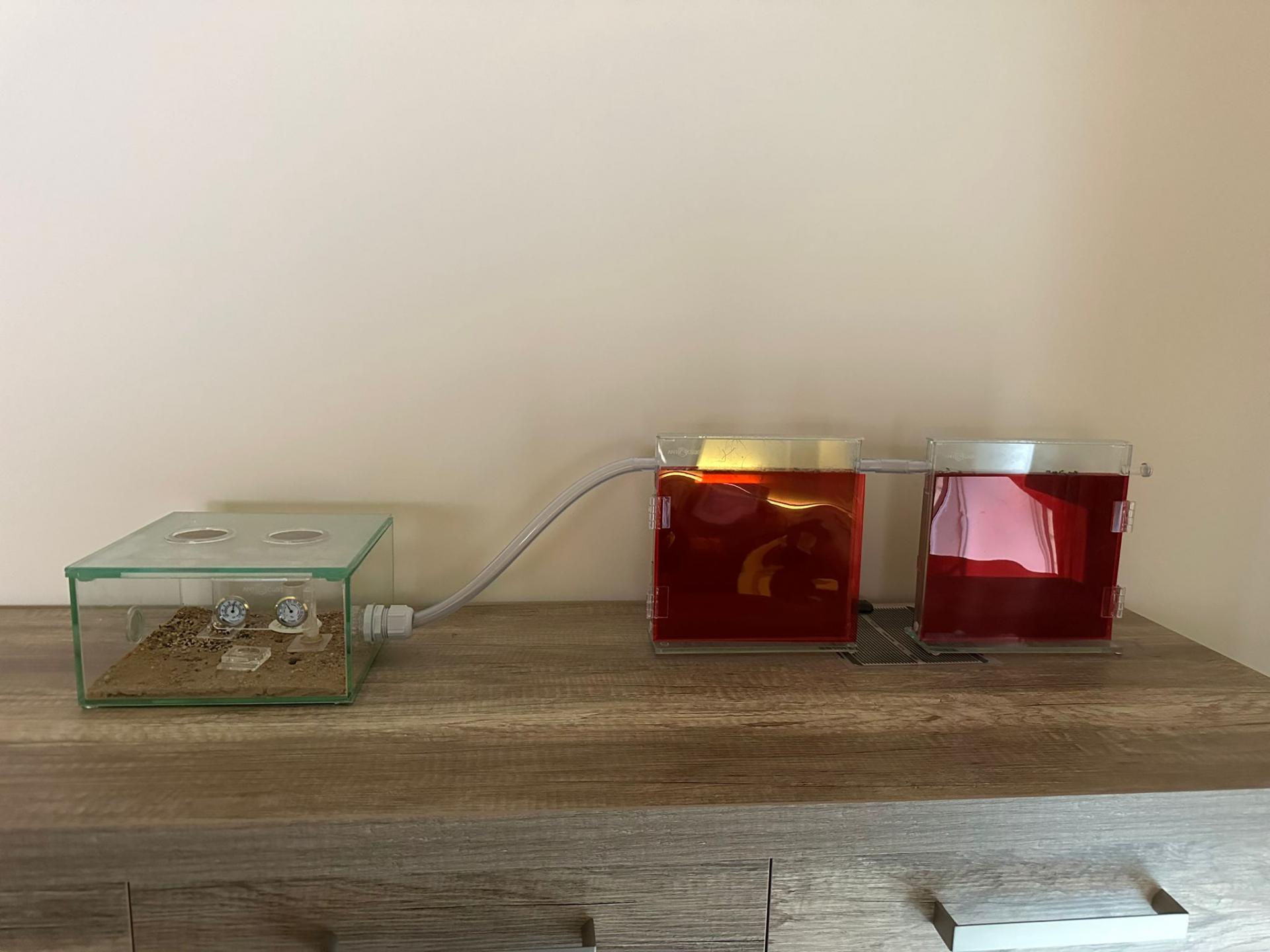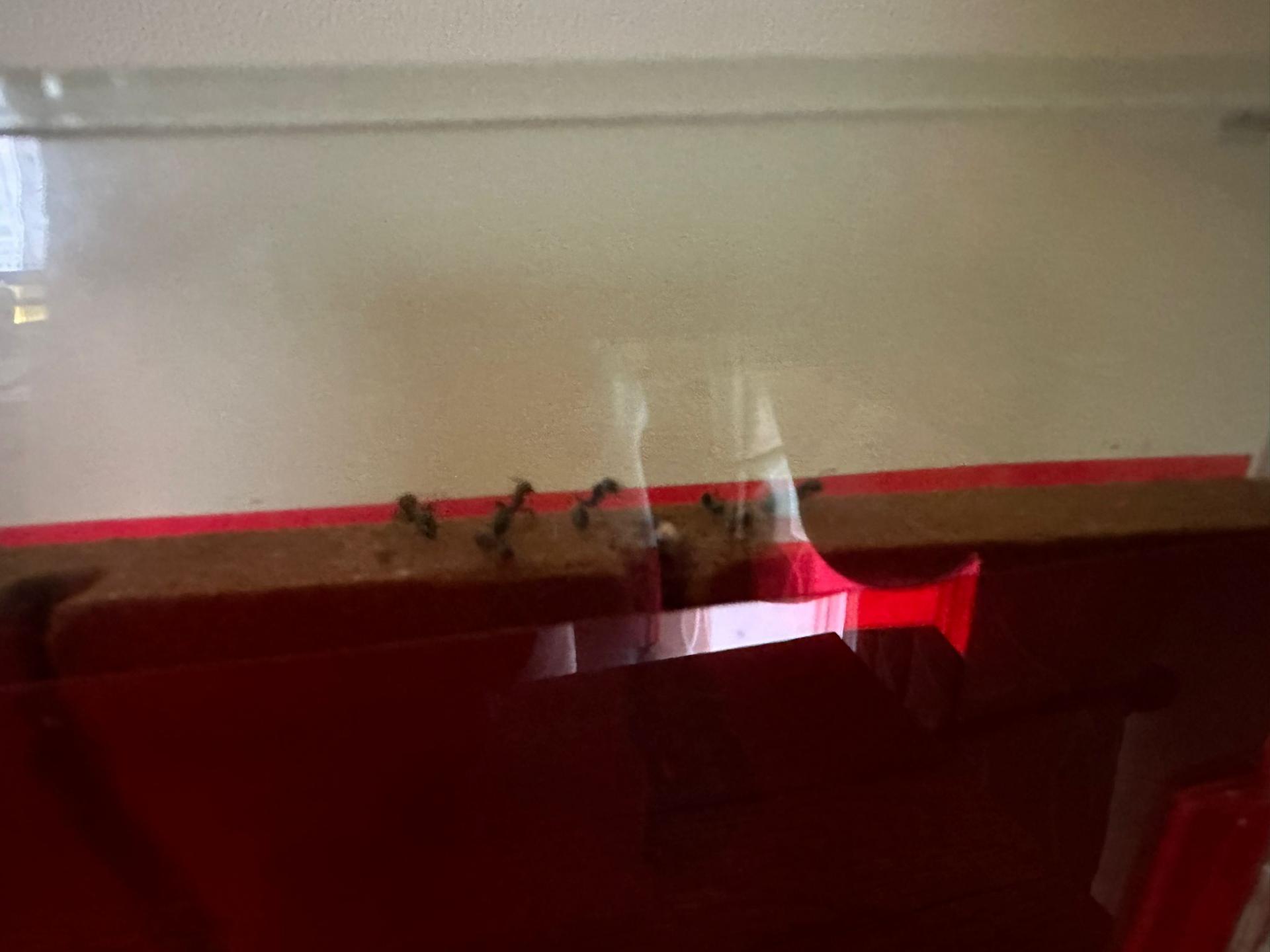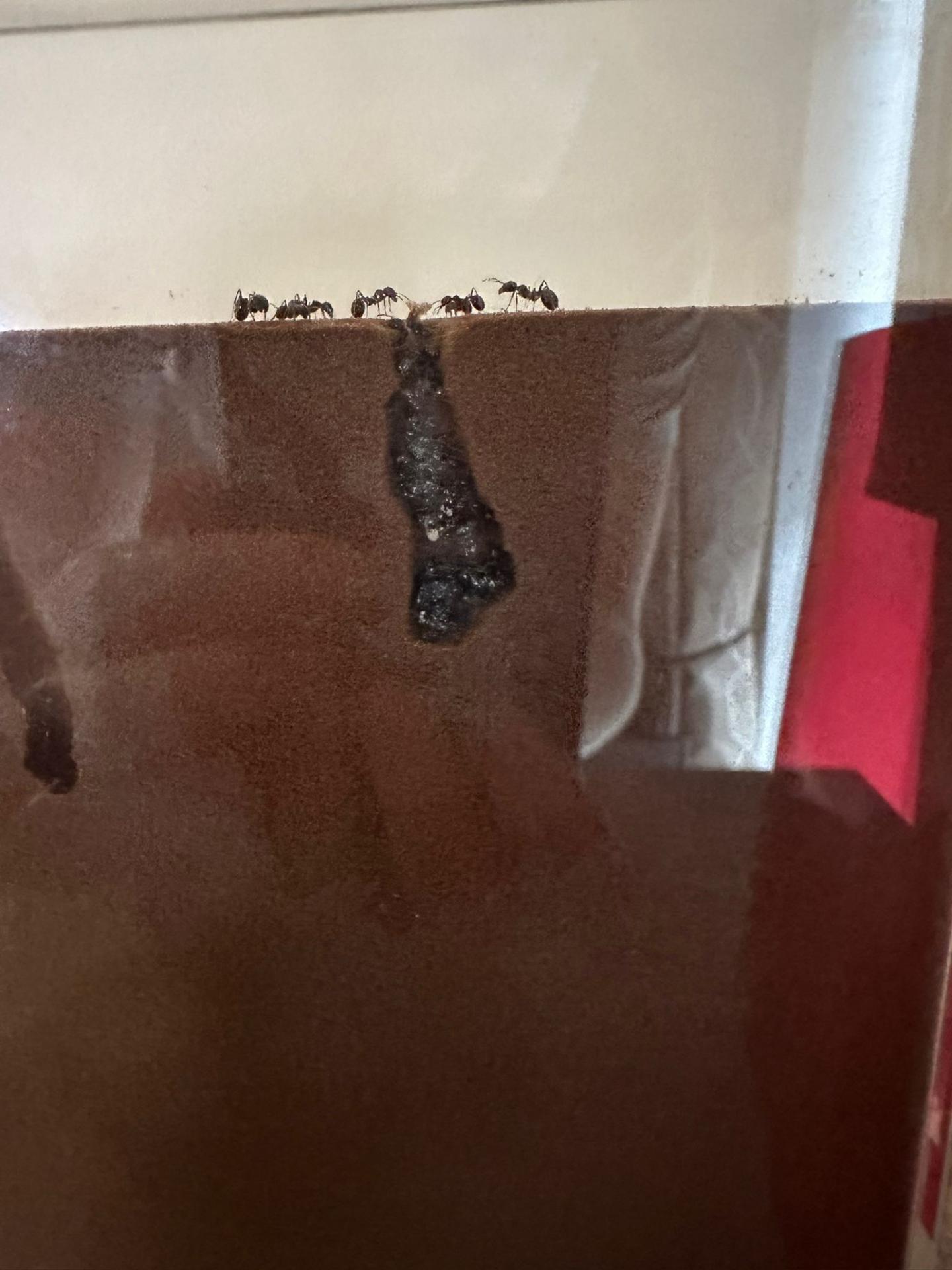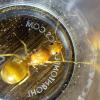Hi everyone,
I'm just after some guidance really, I've always wanted a proper formicarium and ant colony since I got given one of those blue gel enclosures when I was a child. After spending some time online researching, I settled on the AntsUK starter kit for Messor Ants, see below link:
https://antsuk.com/p...r-messeor-spec/
I loved the way they showed how the Messor ants worked in the enclosure, with food stores and a separate compartment for living/growing, as well as a foraging area. However, they provided 0 instructions other than to just put the test tube in the formicarium, and then just the basics of providing food, water, cleaning and temp/humidity conditions.
I must admit I did get a bit over excited at this stage, so no need to mention my shortcomings as I'm now aware of them, it's been a learning curve. I regularly checked on the queen, and after 3-4 weeks, very little had happened., I then began heavily researching the care of the ants (I know I should've done this first, but the AntsUk website made it look so easy).
Basically, I'm now aware that my enclose is vastly too big, despite this, the queen and works have dug a small tunnel in the living/growing chamber, she is laying eggs (not many but a few at a time), and although not very active, workers do wonder to the foraging area for food and water.
What I need advice on, is how to resolve this, from reading this forum, I believe I need to get them back in a test tube for a while, before upgrading a 'small hearth' (not sure what that is) once the colony size is sufficient, before then introducing them to the formicarium.
Questions below:
1. How can I get the colony to move into the test tube?
2. What should the test tube set up be?
3. Do I then leave them in the test tube untouched in a dark room? If so, for how long?
4. What is a small hearth, and how should this be set up?
5. At what size should I move the colony first to the small hearth, and then to the large formicarium?
I've grown rather attached to the ants, and feel I have let them down with my lack of knowledge, so just want some guidance to help them recover and thrive.
Some photos attached
Thanks everyone.




















